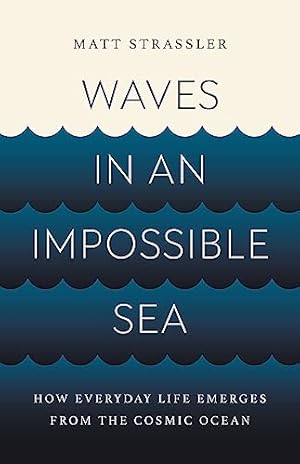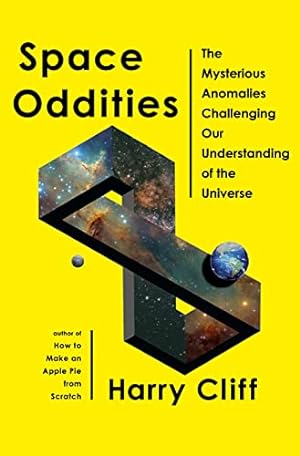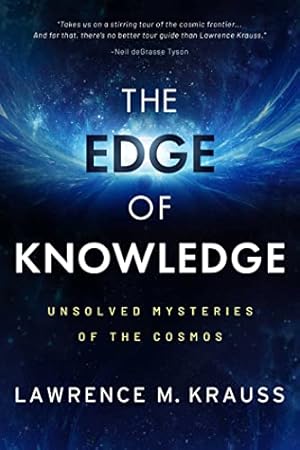These promotions will be applied to this item:
Some promotions may be combined; others are not eligible to be combined with other offers. For details, please see the Terms & Conditions associated with these promotions.
Audiobook Price: $13.08$13.08
Save: $5.59$5.59 (43%)
Your Memberships & Subscriptions

Download the free Kindle app and start reading Kindle books instantly on your smartphone, tablet, or computer - no Kindle device required.
Read instantly on your browser with Kindle for Web.
Using your mobile phone camera - scan the code below and download the Kindle app.



 Audible sample
Audible sample Simply Dirac (Great Lives Book 1) Kindle Edition
“What a fantastic entrée into the life of Paul Dirac and the exotic world of Quantum Mechanics, of which he was one of the great pioneers. With its cast of some of the most important scientists of the modern age, this is both an entertaining and an enlightening read.”
—Michael White, Bestselling author of 39 books including Isaac Newton: The Last Sorcerer
Paul Dirac (1902–1984) was a brilliant mathematician and a 1933 Nobel laureate whose work ranks alongside that of Albert Einstein and Sir Isaac Newton. Although not as well known as his famous contemporaries Werner Heisenberg and Richard Feynman, his influence on the course of physics was immense. His landmark book, The Principles of Quantum Mechanics, introduced that new science to the world and his “Dirac equation” was the first theory to reconcile special relativity and quantum mechanics.
Dirac held the Lucasian Chair of Mathematics at Cambridge University, a position also occupied by such luminaries as Isaac Newton and Stephen Hawking. Yet, during his 40-year career as a professor, he had only a few doctoral students due to his peculiar personality, which bordered on the bizarre. Taciturn and introverted, with virtually no social skills, he once turned down a knighthood because he didn’t want to be addressed by his first name. Einstein described him as “balancing on the dizzying path between genius and madness.”
In Simply Dirac, author Helge Kragh blends the scientific and the personal and invites the reader to get to know both Dirac the quantum genius and Dirac the social misfit. Featuring cameo appearances by some of the greatest scientists of the 20th century and highlighting the dramatic changes that occurred in the field of physics during Dirac’s lifetime, this fascinating biography is an invaluable introduction to a truly singular man.
Benefits of reading Simply Dirac:
- Glimpse into the life of one of the greatest scientists of the 20th century
- Understand the immense influence Dirac had on the course of physics
- Discover the dramatic changes in the field of physics during Dirac's lifetime
- Receive an invaluable introduction to the man behind the genius
What's included:
- An exploration of Dirac's personal life and social skills
- An in-depth look at his landmark book, The Principles of Quantum Mechanics
- An exploration of the Dirac equation
- Analyses of his relationships with other scientists
- Insight into his refusal of a knighthood
Buy Simply Dirac now and get a unique insight into the life of a truly extraordinary man!
- LanguageEnglish
- Publication dateApril 29, 2016
- File size3.1 MB
Shop this series
See full series- Kindle Price:$29.97By placing your order, you're purchasing a license to the content and you agree to the Kindle Store Terms of Use.
- Kindle Price:$98.01By placing your order, you're purchasing a license to the content and you agree to the Kindle Store Terms of Use.
- Kindle Price:$281.43By placing your order, you're purchasing a license to the content and you agree to the Kindle Store Terms of Use.
Shop this series
This option includes 3 books.
This option includes 5 books.
This option includes 10 books.
This option includes 29 books.
Customers also bought or read
- The Strangest Man: The Hidden Life of Paul Dirac, Mystic of the AtomWinner, 2009
 Kindle Edition$16.99$16.99
Kindle Edition$16.99$16.99 - Waves in an Impossible Sea: How Everyday Life Emerges from the Cosmic Ocean
 Kindle Edition$19.99$19.99
Kindle Edition$19.99$19.99 - The Man from the Future: The Visionary Ideas of John von NeumannEditors' pick
 Kindle Edition$9.99$9.99
Kindle Edition$9.99$9.99 - Quanta and Fields: The Biggest Ideas in the Universe#1 Best SellerMathematical Physics
 Kindle Edition$13.99$13.99
Kindle Edition$13.99$13.99 - Faraday, Maxwell, and the Electromagnetic Field: How Two Men Revolutionized Physics
 Kindle Edition$15.87$15.87
Kindle Edition$15.87$15.87 - The Pleasure of Finding Things Out: The Best Short Works of Richard P. Feynman
 Kindle Edition$12.99$12.99
Kindle Edition$12.99$12.99 - Space Oddities: The Mysterious Anomalies Challenging Our Understanding of the Universe
 Kindle Edition$14.99$14.99
Kindle Edition$14.99$14.99 - The Quantum Labyrinth: How Richard Feynman and John Wheeler Revolutionized Time and Reality
 Kindle Edition$12.99$12.99
Kindle Edition$12.99$12.99 - Our Mathematical Universe: My Quest for the Ultimate Nature of RealityEditors' pick
 Kindle Edition$11.99$11.99
Kindle Edition$11.99$11.99
Customers who bought this item also bought
From the Publisher

A Quantum Genius Unveiled
Explore the fascinating life of Paul Dirac, a brilliant mathematician and Nobel laureate whose groundbreaking work shaped the field of quantum mechanics.
Editorial Reviews
Review
-Graham Farmelo, Author of The Strangest Man: The Hidden Life of Paul Dirac, Mystic of the Atom
"Kragh, who is a respected colleague and authoritative historian, has taken up an imposing challenge. Dirac's work is obscured by three barriers to understanding: The complexity of quantum mechanics, the novelty of Dirac's take on this eld, and the strangeness of the man. To reveal Dirac's genius through this triple veil in such a clear way was no easy task, but one that Kragh has handled remarkably. He is a reliable guide through this di cult terrain and has contributed many valuable insights to this work."
-Hans Christian von Baeyer, Chancellor Professor of Physics, Emeritus, at the College of William and Mary
"What a fantastic entre e into the life of Paul Dirac and the exotic world of Quantum Mechanics, of which he was one of the great pioneers. With its cast of some of the most important scientists of the modern age, this is both an entertaining and an enlightening read."
-Michael White, Bestselling author of 39 books including Isaac Newton: The Last Sorcerer"
About the Author
Product details
- ASIN : B01EBFIPD8
- Publisher : Simply Charly (April 29, 2016)
- Publication date : April 29, 2016
- Language : English
- File size : 3.1 MB
- Text-to-Speech : Enabled
- Screen Reader : Supported
- Enhanced typesetting : Enabled
- X-Ray : Not Enabled
- Word Wise : Enabled
- Print length : 134 pages
- Best Sellers Rank: #1,276,948 in Kindle Store (See Top 100 in Kindle Store)
- #299 in Scientist Biographies
- #538 in Quantum Theory (Kindle Store)
- #869 in Biographies of Scientists
- Customer Reviews:
Customer reviews
Customer Reviews, including Product Star Ratings help customers to learn more about the product and decide whether it is the right product for them.
To calculate the overall star rating and percentage breakdown by star, we don’t use a simple average. Instead, our system considers things like how recent a review is and if the reviewer bought the item on Amazon. It also analyzed reviews to verify trustworthiness.
Learn more how customers reviews work on AmazonTop reviews from the United States
There was a problem filtering reviews. Please reload the page.
- Reviewed in the United States on August 21, 2022I've had zero physics, but both my husband and I gave the book a go, having read a strong recommendation. I grasped most of the gist and really enjoyed it.
I've come away with a grasp of physics and clear enough mental images of, for example, magnets with only one side having pull, or how Dirac's imagination came up with positrons or weird stuff like anti-electrons. Dirac's shaping of quantum mechanics overall apparently was done mentally, writing down fully completed thought, not, as today writing teachers teach...write things down in drafts to clarify. Dirac wrote mostly in his head.
I had no trouble imagining Dirac's skill at making math formulas "beautiful," much as economical poetry or a precise still life can be. This was contrasted with rangy "ugly" formulas by other differently brilliant physicists like Feynmann.
Dirac was (in)famous for his economy of words. The author described a comment from a frustrated student person who said something like, "I just dont grasp this, " and Dirac said nothing. Some minutes passed and someone else asked him why he didn't answer the question, and Dirac said, It wasn't a question. He was literal and logical, irritating and maybe off-putting by "normal" give and take talk standards.
But the book aimed to show how his science advanced, and of beneficial scientific collegial exchange, he had plenty. He was a work-alone genius but he wasn't isolated. He had years of long written interchanges with Einstein, Bohr, Heisenberg, Kapitsa etc. and loved traveling, and meeting scientists in their labs. He repeatedly credited Heisenberg. There was disagreement/oneupsmanship sometimes, among the scientists, but beneficial exchange, visits, and regard played important parts.
I wish the author had filled in just a few more basics of his wife Manci/Margit, not for cheesy "personal interest" but for how his mind worked. He did include this endearing bit: On meeting the socially charming Margit, then traveling home, with characteristic honest analysis, Dirac was said to have written her that he found himself missing her. He found it puzzling, though, as he'd not before "missed" people he'd departed from.
A quick note would've been welcome that they married, had children, and she outlived him by 18 years. I had to look up online, as I and our family lived in Tallahassee, working/studying in the 80s at FSU, and at least once I saw Dirac on campus. I worked with biology, physics, and chemistry faculty, and heard them speak how nifty it was he chose to accept a position among us.
As a postscript to the "meat" of this informative book, I came across an American Scientist article from the mid-70s by the director, William E Carter, of the observatory on Maui, up on Haleakala. Dirac and his wife spent 2 days as home guests, and Dirac read books in cordial grandfatherly fashion with Carter's then 9 year old daughter. I found that different glimpse of a disciplined, tersely logical scientist not diminished by seeing his range a bit broader. Reading that episode was like dessert after the main course of this good book.
= = = = = = = = = = = = = = = = = = = =
- Reviewed in the United States on August 25, 2018While Simply Dirac is quite short, it does allow it to focus on the more important parts of Dirac's life and times. It covers his Dirac Equation and the textbook he wrote and some of the things he did that didn't come through perfectly. This is mainly covered with the chapter on magnetic monopoles. The book briefly touches on some of Dirac's personality and peculiarities but does not go in depth with that.
- Reviewed in the United States on December 15, 2016this is a excellent book. it focuses on Dirac's scientific work as opposed to his 'wierd' personality whivch is appropriate for a scientific biography. much better book than the Famelo biography.
- Reviewed in the United States on May 16, 2017a fascinating man
- Reviewed in the United States on August 9, 2018Love reading this!
- Reviewed in the United States on February 20, 2018Genious
- Reviewed in the United States on June 3, 2016“Schrödinger and I both had a very strong appreciation of mathematical beauty, and this appreciation of mathematical beauty dominated all our work.” Dirac described it “as a sort of faith with us that any equations which describe fundamental laws of nature must have great beauty in them. It was like a religious faith with us.” (1633)
1. Strangeness and Genius
2. Quantum Wizard
3. Anti-Worlds
4. Monopoleon
5. On the Road
6. Against the Stream
7. Cosmythology
8. Natural Philosopher
9. Mathematical Beauty
10. Dirac’s Legacy
Kragh presents brief summary of Dirac's childhood and then focuses on his professional work. Justly explains the amazing prediction of anti-matter. Covers the effects today. . .
''The antielectron was originally a pretty wild idea based on an abstract theory of quantum mechanics, and the positron was an elusive and exotic particle of interest only to pure physics.''
''Today, many hospitals are equipped with PET scanners, an acronym for positron-electron tomography. The patient is injected with a radioactive isotope, which emits positrons, and the positrons annihilate with the electrons in the tissue. As a result of the annihilation, a pair of well-defined photons is emitted. By registering the photonic signals, a computer image of some inner part of the patient is produced. The first versions of PET scanning technology were developed when Dirac was still alive. Had he known about the technology (which he probably did not), he might have been pleased to see how his old prediction had morphed into a useful medical imaging instrument. But it is more likely that he wouldn’t have cared—medical imaging by means of positrons is not fundamental physics.'' (loc 678)
Explains Dirac's decision to avoid working on the bomb.
''Neither should his decision not to participate in the Manhattan Project be seen as a conscious opposition to using physics for military purposes. This was not a question that preoccupied Dirac. He also did not seem to have cared much about the scientists’ ethical responsibility and the problems raised by the new nuclear weapons. These topics were widely discussed in the immediate post-war period, but not by Dirac. On the whole, he was the arch-typical ivory-tower scientist.'' (loc 984)
Perfect description.
As Dirac matured his interests changed. Mathematical beauty was important. . .
''In 1960, Eugene Wigner, Dirac’s brother-in-law and a former Göttingen student (and Hilbert’s assistant), famously discussed the “unreasonable effectiveness of mathematics in the natural sciences.” He suggested that the pervasive usefulness of mathematics in physics bordered on the miraculous.
This was not a new observation, for in a 1921 lecture Einstein had referred to the same question:
“How can it be that mathematics, being after all a product of human thought which is independent of experience, is so admirably appropriate to the objects of reality?”
And 18 years later, Dirac repeated: “There is no logical reason why [the method of mathematical reasoning] should be possible at all, but one has found in practice that it does work and meets with considerable success.” If there was no logical reason, what reason could there be?'' (loc 1562)
Outstanding question.
Dirac once commented; ''phrased the same message in terms similar to those which Galileo had used more than 300 years earlier: “God is a mathematician of a very high order, and he used very advanced mathematics in constructing the universe.”
Contrary to Galileo, a faithful Catholic, Dirac’s rare reference to God was just conventional and not an indication of belief in divine creation.'' (1596)
Another time: ''The emotional element is also what Dirac indicated in a moving obituary he wrote for his friend and colleague Schrödinger in 1961. He confided that the Austrian physicist was “the one that I felt to be most closely similar to myself.”
The reason, he believed, was that “Schrödinger and I both had a very strong appreciation of mathematical beauty, and this appreciation of mathematical beauty dominated all our work.” Dirac described it “as a sort of faith with us that any equations which describe fundamental laws of nature must have great beauty in them. It was like a religious faith with us.” (1633)
Striking that this life-long atheist refers to 'religious faith'
This work includes only a limited coverage of Dirac's personal life. Focuses on his physics and mathematical life. Good introduction to his effect on twentieth century physics. Reader will need interest in science and/or scientific history.
Easy to grasp, although with some coverage of the weirdness of the quantum world. I think everyone should have at least some idea of the science that dominates our world.
No footnotes, no index, few photographs.
(Publisher sent me a copy to review.)
Top reviews from other countries
-
 Dr. T.Reviewed in Germany on September 25, 2021
Dr. T.Reviewed in Germany on September 25, 20215.0 out of 5 stars Simply Dirac – not simplified.
Helge Kragh, Professor am Centre for Science Studies der Universität Aarhus, arbeitet auf dem Gebiet der Geschichte von Wissenschaft und Technologie, 1990 veröffentlichte er eine wissenschaftliche Biographie von Paul Dirac, einem der Wegbereiter die modernen Quantenmechanik, der aber, im Gegensatz zu Heisenberg, Pauli, Jordan und Schrödinger, eher unbemerkt von der Öffentlichkeit seine Arbeiten schuf. Sein hier vorliegendes Werk ist nun eine Art Kurzfassung, das im Rahmen der Serie Greate Lives erschien, die sich der Aufgabe verschrieben hat, knappe aber verlässliche Einblicke in Leben und Werk der einflussreichsten Wissenschaftler, Künstler und Schriftsteller der Welt zu präsentieren, wie der Herausgeber der Serie, Charles Carlini (Simply Charly), in seinem Vorwort anmerkt.
Paul Dirac begann zunächst ein Elektroingenieur- Studium in Bristol, wechselte dann aber zur Mathematik, und erhielt schließlich ein Stipendium für ein Graduiertenstudium in Cambridge, dort wurde Ralph Fowler sein Betreuer, der ihm 1925 den Probedruck von Heisenbergs fundamentaler Arbeit zum Durchbruch zur neuen Quantenmechanik zeigte; Dirac fand diese zunächst recht unzugänglich, stolperte dann aber über Heisenbergs, eher beiläufige Bemerkung, dass die dynamischen Größen der neuen Mechanik nicht kommutativ seien, d.h. nichttriviale Kommutatoren hätten – Dirac kam auf die zündende Idee, dass damit etwas Wesentliches verbunden sein müsse, und er erkannte, dass die Kommutatoren Analoga zu den Poisson- Kammern der klassischen Mechanik sind. Diese Verbindung inspirierte ihn, so dass er kurzer Hand eine eigene Version der Quantenmechanik ausarbeitet. Diese Theorie arbeitete Dirac in den folgenden Jahren zu einer allgemeinen Transformations Theorie nicht- kommutieren Größen (q- numbers) aus, und konnte damit die Äquivalenz von Heisenbergs Matrizen und Schrödingers Theorie zeigen.
Seinen größten wissenschaftlichen Durchbruch erzielte Dirac aber mit der Formulierung der Gleichung der relativistischen Quantenmechanik, die auf dem eleganten mathematischen 'Trick' beruht, Matrizen zu betrachten, mit mit deren Hilfe Dirac die 'Quadratwurzel' des Hamilton Operators bilden konnte. Aus dieser neuen Gleichung folgte ganz zwanglos, dass Elektronen einen Spin besitzen müssen. Eine weitere, zunächst verwirrendes Eigenheit an Diracs Theorie ist, dass sie neben ‚normalen‘ Lösungen auch solche negativer Energie zulässt. Während Dirac noch nach Gründen sucht, warum solche Lösungen nicht real sein könnten, hat seine Theorie tatsächlich die Existenz des Anti- Elektrons, resp. Positron, vorhergesagt, das Anderson 1932 schließlich experimentell in der kosmischen Strahlung nachweisen konnte.
Selbst wenn man die Maßstäbe der Gemeinschaft genialer Physiker anlegt, dürfte Dirac daraus hervorgestochen haben – ausgesprochen wortkarg, wurde Dirac Protagonist zahlloser skurriler Anekdoten, die gerade Bohr gern erzählte: Bei einem seiner Vorträge, warf einer der Hörer ein 'die Ableitung diese Formel versehe ich nicht...', Dirac stockte kurz, um dann ungerührt fortzufahren, worauf ihn der Moderator unterbrach 'Prof. Dirac, können sie bitte auf die Frage eingehen...', worauf Dirac antwortet: 'welche Frage? – das war eine Feststellung'. Auf diese und andere menschliche Eigenheit geht Kragh in einem der letzten Kapitel ein. Abschließend erörtert der Autor Diracs allgemeine Ansichten zur Philosophie der Physik; dabei interessierte sich Dirac kaum für Philosophie im eigentlichen Sinn, in seinen späteren Jahren, reflektierte Dirac, den stets vor allem die fundamentalen Aspekte der Physik begeisterten, über philosophische Prinzipien, die ihn bei seiner Arbeit beschäftigten. Eine immer wiederkehrende Rolle spielt das Prinzip der mathematischen Schönheit.
Mit dem vorliegenden schmalen Büchlein gewährt Helge Kragh dem Leser, einen wohldurchdachten Einblick in dessen wissenschaftliche Publikationen, sowohl aus seinen Hauptarbeiten zu den Fundamenten der Quantenmechanik, als auch auch aus seinen weniger bekannten Artikeln aus späterer Zeit, etwa zu Diracs Ideen zur Kosmologie, aber auch zu seinen eher umstrittenen Vorstellung zur Philosophie; er vermeidet dabei unnötige technische Details, ohne seine Darstellung dabei zu sehr zu vereinfachen – letztlich vermittelt er damit einen Eindruck von Diracs kreativer Vielfalt originären Ideen.
Das Buch ist schön ausgestattet, es wird ergänzt von einer Bibliographie und Anregungen zur weiteren Lektüre.



































